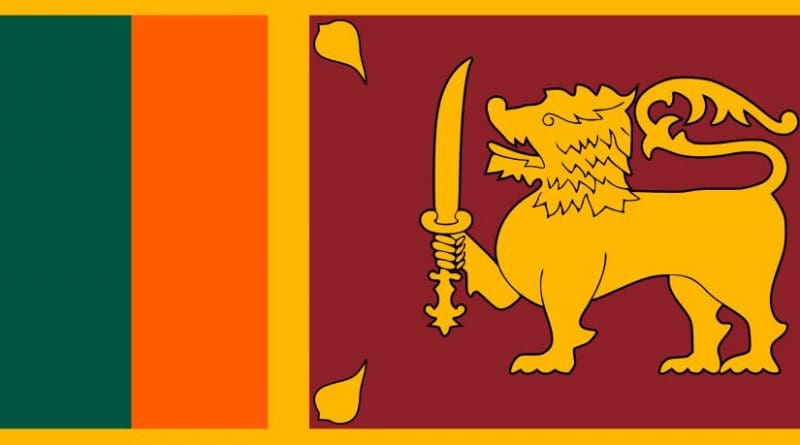Conflict To Co-Existence: Debating Heritage And Homogenisation – Analysis
By IPCS
By Asanga Abeyagoonasekera*
“From amidst the Samanola’s montane rings
And sprawling glades there serenely springs
The Lotus-the Buddha’s Sacred Feet,
Ushering Loving-kindness wide, in surfeit
This is our heritage and birth-right
And our eternal Guiding Light” — Mahagama Sekara
translated by Prof Vini Vitharana
The singing of the Sri Lankan national anthem in both Sinhala and Tamil at Sri Lanka’s 68th national independence day elicited much discussion. Introducing the singing of the national anthem in Tamil was a sign of reconciliation. However, this led also led to hurt sentiments in certain sections of society.
Despite the criticism, the operatic version of Danno Budunge Opera version gained much popularity; with Youtube hits of more than seventy three thousand – an earlier version by Nanda Malini stands at eleven thousand hits.
One should also remember that the internationally reputed musician James Ross who has conducted over 950 works also played this beautiful song at the Nelum Pokuna Theater, which was breathtaking to most in the audience. This author was fortunate to meet Ross a day before his performance, when he explained the beauty of this song and that he would play with much respect. Kishani Jayasinghe who sang the operatic version did perform well in her own sphere, however, this author feels that this particular song should by sung or played with a resemblance to the traditional culture which is unique to Sri Lanka. This is because the soul of the song revolves around Buddha, Dhamma and the sacred Anuradhapura, the heart of Buddhism.
What is unique must be preserved. This includes the cultural mythology of a nation that to an extent still stands as the reference point to Sri Lankan identity. Anything global is often seen as a homogenisation of the local, and the tension with rising globalisation is the collision between what is considered global versus what is local. Preserving local culture is a challenge for many nations nowadays. The cultural fabric of Sri Lanka, which is closely knit with village temple, irrigational water tank and the mythology is far more embedded than newer movements emboldened through modern slogans.
Mythology derived from the Greek word ‘Mythos’ meaning the story, which is significant from earlier socialisation to shape cultural values and behaviour. What exists should be preserved as it is, and the great poet Mahagama Sekara paints the picture of this birth right clearly. This message must permeate to all levels, including Sri Lankan youth.
The youth bulge in South Asia is an asset for countries but unfortunately has not fully tapped in the field of economic development. The youth population below 30 years is around two-thirds of the global population. Last week, Sri Lanka witnessed a massive youth demonstration by degree-holders in Colombo demanding jobs from the government. The protest had to be aborted forcefully by the police using water cannons and tear gas. At the same time, within the city of Colombo, Young Global Leaders, a youth group of the World Economic Forum discussed solutions to many issues including providing a better future for the youth in South Asia.
According to the World Bank’s latest report, more than 40 per cent of the population lives on less than Rs. 225 a day. This is a very low figure, which needs serious attention from the government. A top priority of policy-shapers should be creating better living conditions for the less privileged of society. While the affluent of society including ministers can afford to fly to Singapore for medical treatment and higher education, not many ordinary citizens can afford the same health care or education – it is therefore important to provide first class services within the country.
In a move to introduce positive reform to increase women’s representation in political office by 25 per cent for the forthcoming local government elections, Prime Minister Ranil Wickramasinghe managed to get the relevant bill passed with much criticism from many parliamentarians. It is a great deed and a move towards women’s engagement in decision-making, which is required. President Paul Kagame of Rwanda is an example of bringing more women to his cabinet and parliament to recognise the importance of women’s representation in Rwanda. Rwanda has achieved an impressive level of gender equality; no country in the world has a larger percentage of women in its parliament than Rwanda – more than 50 per cent. Going further in amending the constitution to support women, representation-setting limits should not have less than 30 per cent in cabinet with 64 per cent of people in parliament being women. 42 per cent are in the judiciary with women mayors and women ministers.
In Sri Lanka, the number of female MPs stands at 5.6 per cent, which is less than 15 of the 225 members of the House – among the lowest in South Asia. This is an important area for improvement in Sri Lanka which has more than 40,000 war widows and many other women involved directly in economic activity.
*Asanga Abeyagoonasekera
Executive Director, Lakshman Kadirgamar Institute of International Relations and Strategic Studies (LKIIRSS), Sri Lanka

